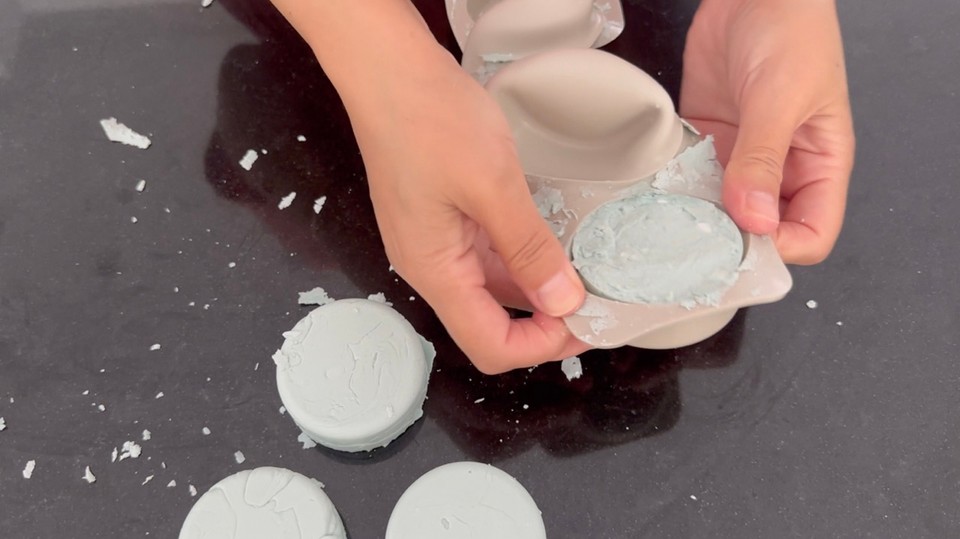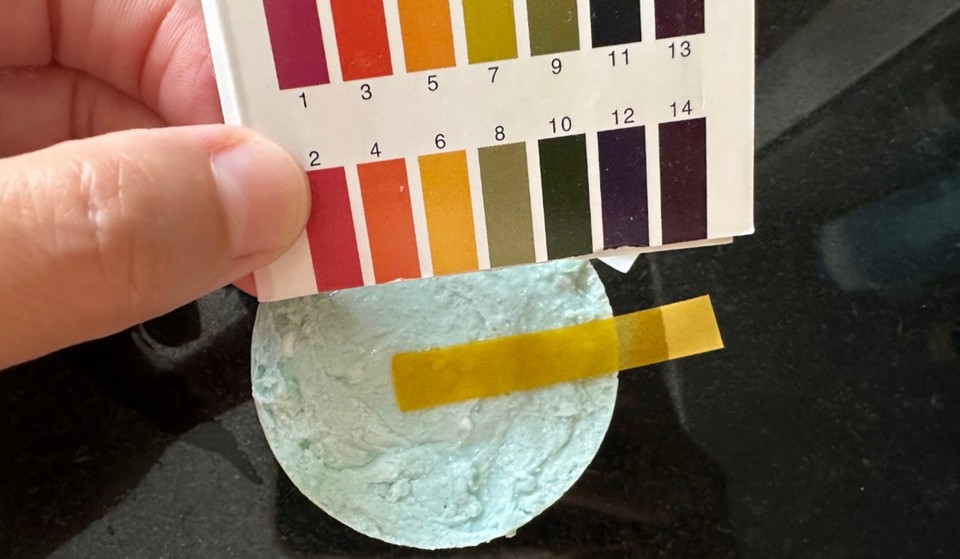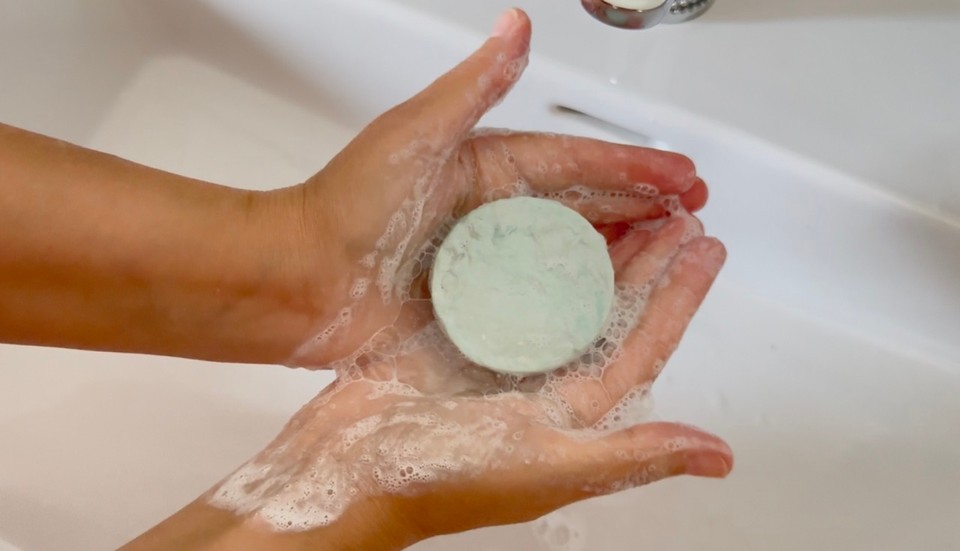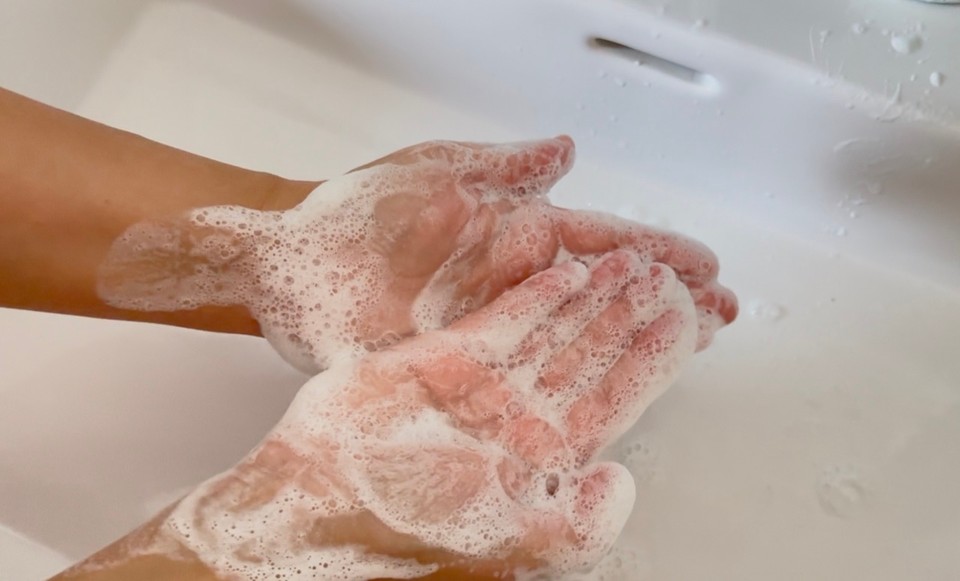Pourable Shampoo Bars
| Phase | Ingredient | Percent (%) | Weight (g) |
|---|---|---|---|
| Phase A | BTMS25 (INCI - Cetearyl Alcohol and Behentrimonium Methosulfate) | 8 | 8 |
| Cetearyl alcohol | 15 | 15 | |
| Stearic acid | 4 | 4 | |
| Agran oil | 4 | 4 | |
| Phase B | SCI powder (Sodium Cocoyl Isethionate) | 30 | 30 |
| Sodium Cocoyl Glutamate powder | 28 | 28 | |
| Decyl glucoside | 4.5 | 4.5 | |
| Phase C | Citric acid | 0.3 | 0.3 |
| Sodium lactate | 2.7 | 2.7 | |
| Preservative ProBiocin V® (INCI - Lactobacillus Ferment Lysate) | 2.5 | 2.5 | |
| Fragrance oil / essential oil | 1 | 1 |
Solid shampoo bars are very easy to use and carry when traveling. They have high cleansing properties and are plastic-free. I have used solid shampoo bars for the last four years and prefer them over liquid ones.
If you want to read more about shampoo bars, check out this post about shampoo bars for beginners.
You will find many more recipes for shampoo bars on the website under the category "hair".
A pourable formula for a shampoo bar will give you a hard bar that will last longer and not crumble after a few uses. By melting the solid surfactants, we are melting the fatty acids, which will later re-form and result in a hard bar.
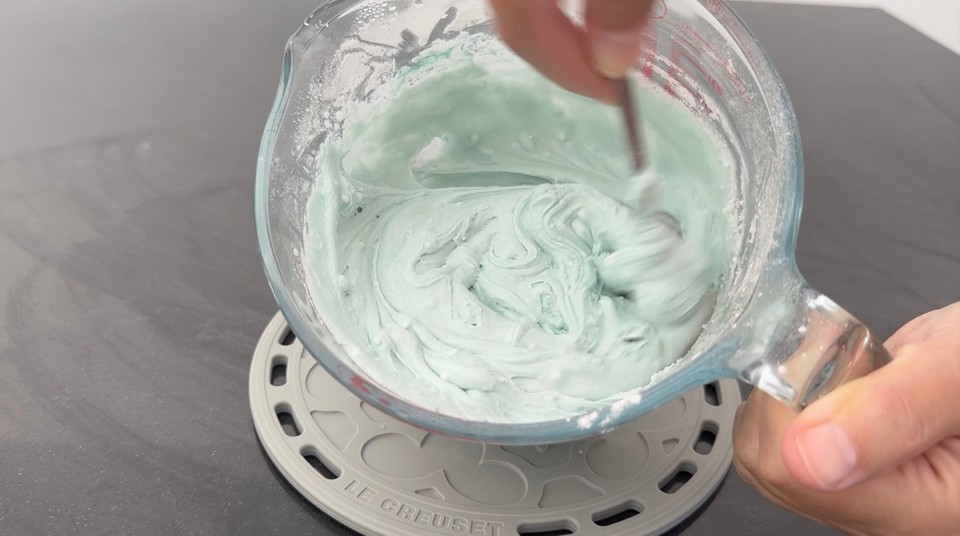
You can help support my website and channel through the “buy me a coffee” page.
Here is the link: https://www.buymeacoffee.com/diycosmetica
Your support helps me keep sharing here more information and more formulas.
Phase A is my oil-based ingredients. Phase A contains cationic surfactant (BTMS25), cetyl alcohol, stearic acid and argan oil.
BTMS adds conditioning properties to the shampoo bar and also gives a silky slip and feel to the bar.
Cetearyl alcohol is an emollient that contributes to the texture and consistency of the bar; it provides a creamy feel to the bar and helps to harden it. You can replace it with Cetyl Alcohol, another fatty alcohol that can provide conditioning benefits in the shampoo bar.
Stearic acid also helps to harden the bar and add to the creamy texture and lather of the final bar.
If you want to replace the stearic acid, use cocoa butter or myrica fruit wax. Read here to learn more about waxes in cosmetics.
Finally, I used argan oil in this formula. If you want to swap the argan oil, you can use coconut oil, avocado oil, broccoli seed oil, jojoba oil or even shea butter. Phase B is a combination of 3 surfactants, 2 solid ones and 1 liquid surfactant.
My favorite solid surfactant is SCI (Sodium cocoyl isethionate). SCI is considered a mild cleanser, which leaves a creamy feeling when washed off. It has great lather and foaming properties.

If you use SCI noodles, you can melt them the same, but it will take longer if you can grind the noodles before and use the powder.
Remember to use a respiratory mask while working with fine powders to avoid respiratory irritation.
My second solid surfactant is Sodium Cocoyl Glutamate is a mild and gentle surfactant derived from coconut oil and fermented sugar. Sodium Cocoyl Glutamate has cleansing abilities and is considered gentle enough that it won't irritate the skin.
My SCI powder has PH 4.7-6.0. My powdered Sodium Cocoyl Glutamate has PH 5-7.
Sodium Cocoyl Glutamate is considered a very gentle surfactant that can reduce the irritant potential of other surfactants to achieve a final product that is gentler on the skin.
SCI (Sodium cocoyl isethionate) and Sodium Cocoyl Glutamate are anionic surfactants, while Decyl glucoside is a nonionic surfactant. Nonionic and anionic surfactants are compatible and can be used together without causing stability issues.
If you don't have Decyl glucoside you can use Coco glucoside (another nonionic surfactant).
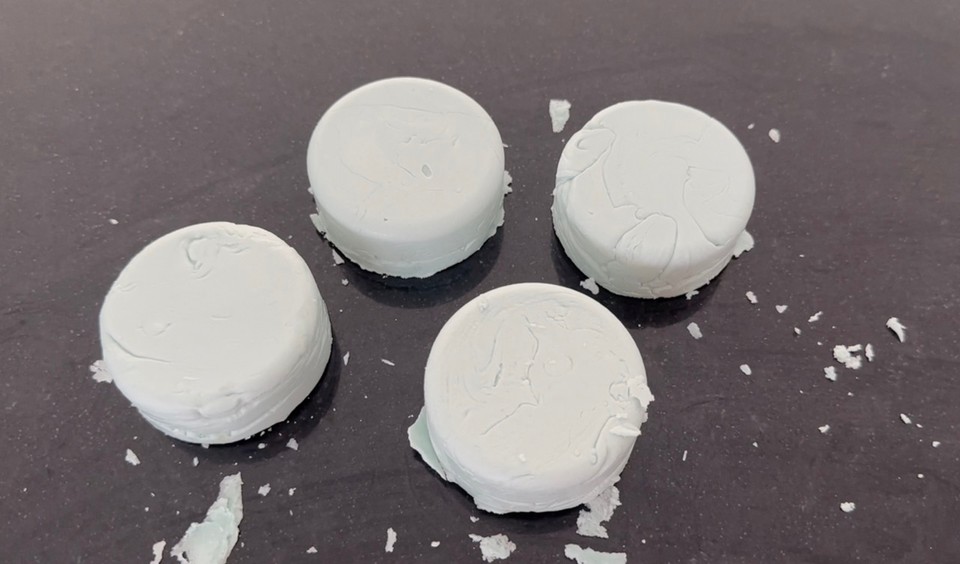
You can use other solid surfactants, such as SLSA (Sodium lauryl sulfate), which is another anionic surfactant, or SCS (Sodium Coco Sulfate), another solid anionic surfactant with great foaming abilities.
Phase C is the "cool down" phase and is added after I remove phases A and B from the heat.
Phase C is the preservative, the essential oil and the citric acid solution (citric acid and sodium lactate).
I aim to achieve a final PH between 5 to 6. I add a small percentage of citric acid to help keep the PH under 6.5.
Sodium lactate is added as a humectant, and to dissolve the citric acid powder into it. Sodium lactate and BTMS are generally compatible; I didn't see any stability issues by combining them, although sometimes sodium lactate can cause some issues with cationic surfactants.
I dissolve the citric acid in the sodium lactate in phase C.
You can use glycerin instead of sodium lactate.

My preservative is ProBiocin V® (INCI: Lactobacillus Ferment Lysate). This preservative is suitable for a PH range of 3-8; this preservative hydrated and balanced skin and scalp.
You can use other preservatives; check the supplier instructions regarding usage rate. If you only need 1% of your chosen preservative, add the difference (1.5%) to the decyl glucoside. So for 100g of shampoo bar use 1g of preservative and 6g of decyl glucoside.
For scent, I used eucalyptus essential oil. You can use fragrance oil or different essential oils. Always check that they are skin safe before adding them.
I added a pinch of mica color (I combined two colors) to accompany my eucalyptus scent. You can skip the mica color and have a white bar or add your desired color to compliment the scent you chose for this shampoo bar. If you want to color your bar without using mica, consider using an oil infusion (more about oil infusions here) or natural herbal powders such as camomile, indigo, hibiscus, shikakai or green tea powder. Check this post for an indigo shampoo bar and this post for a shikakai marble shampoo bar.
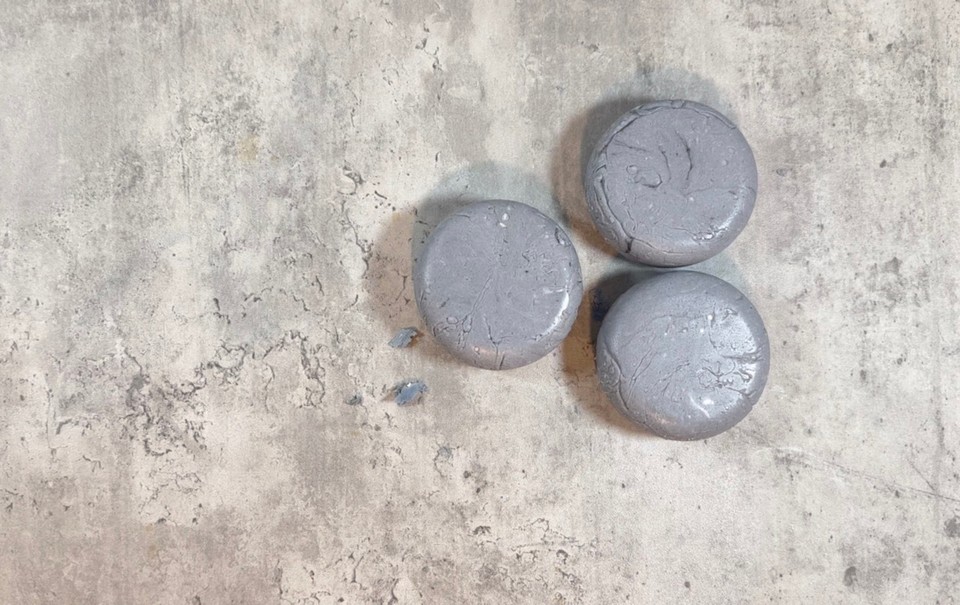
This formula is excellent for normal to dry hair, and the bars are hard and long-lasting.
Method:
- In a heat-resistance beaker, add phase A ingredients; start with BTMS25 and the Cetearyl alcohol, then add the stearic acid and the argan oil.


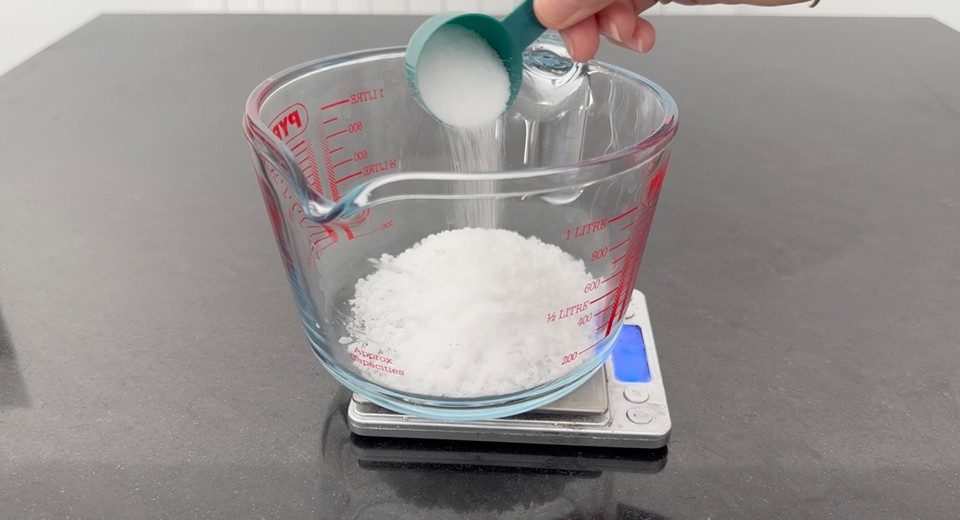
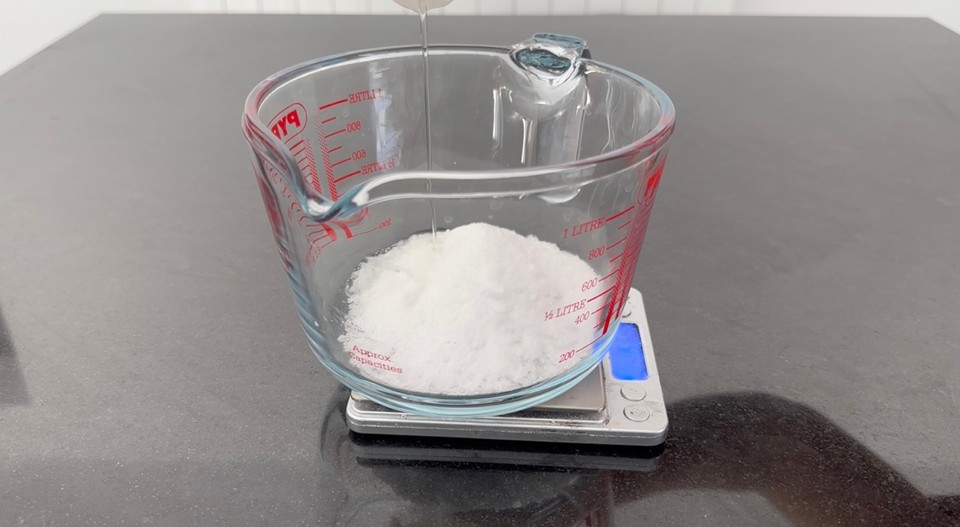
- Place phase A into a double boiler on medium heat to melt.

- In a different container, add phase B ingredients.
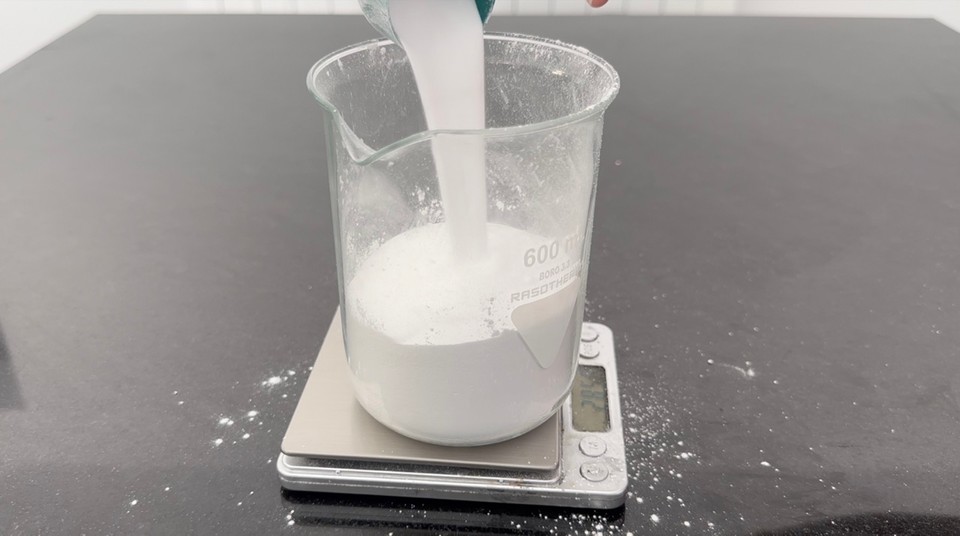
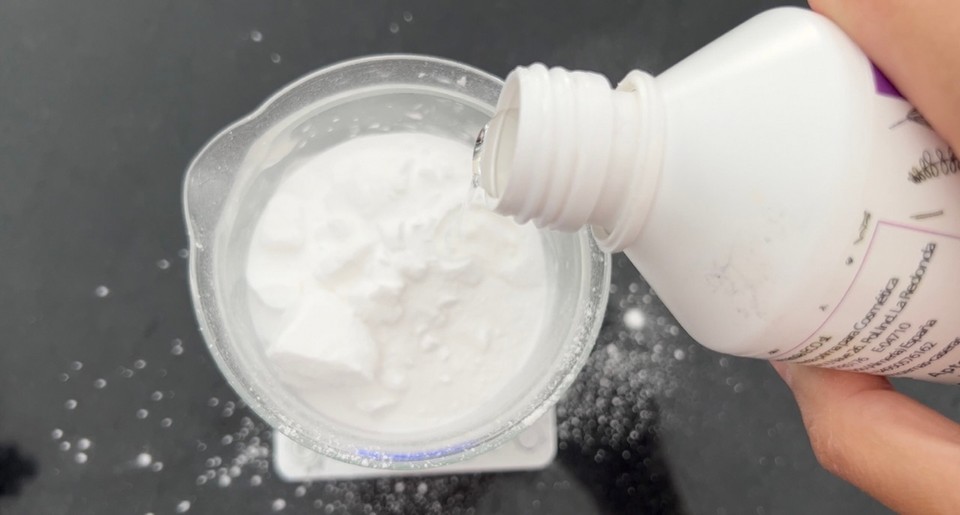
- Once phase A is completely melted, add phase B while the beaker remains on the heat.
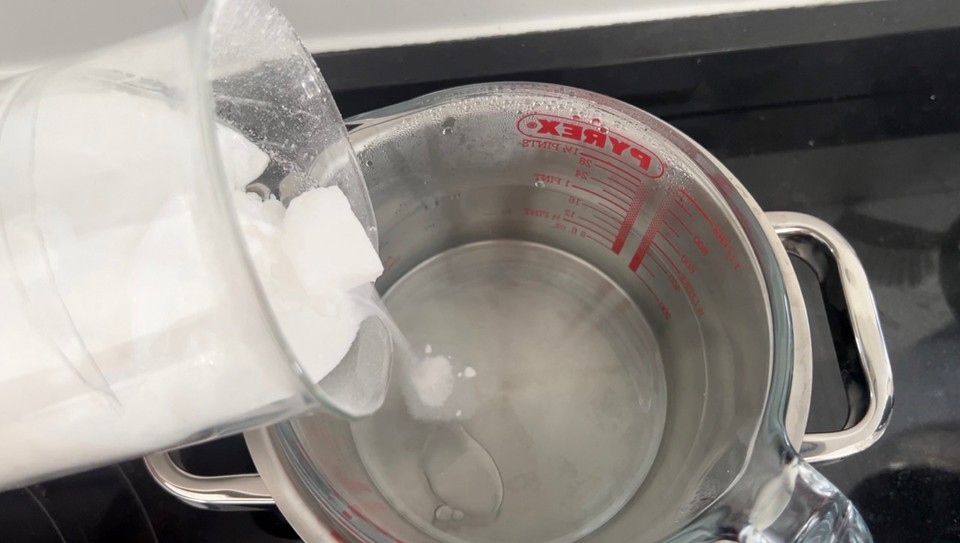
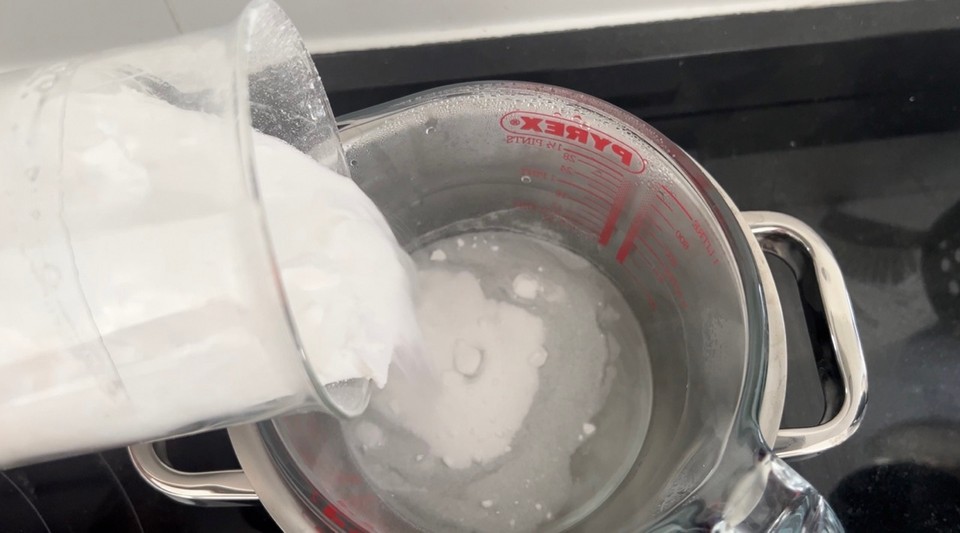
- Stir phases A and B to combine them while they are heating.
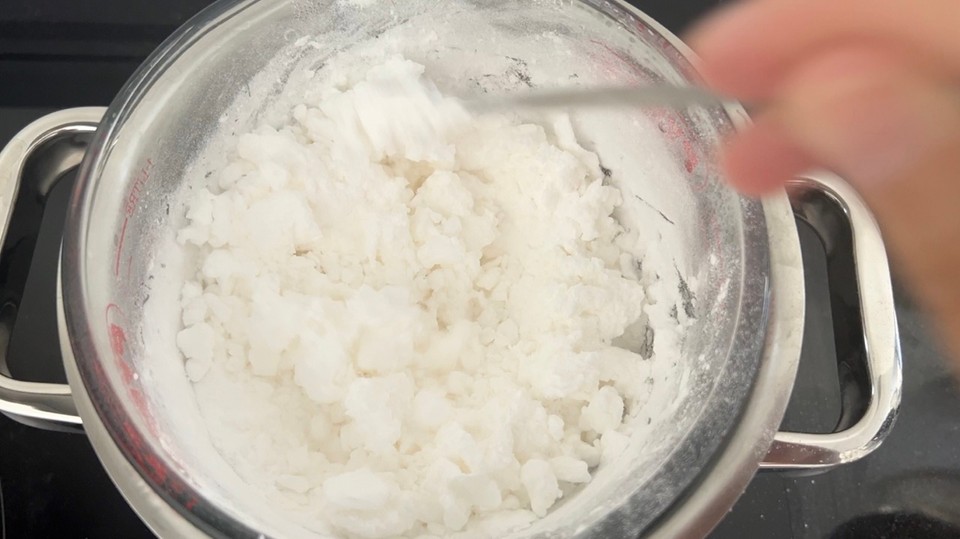
- Meanwhile, prepare in a different container phase C. Dissolve the citric acid with the sodium lactate and add the rest of the phase C ingredients.
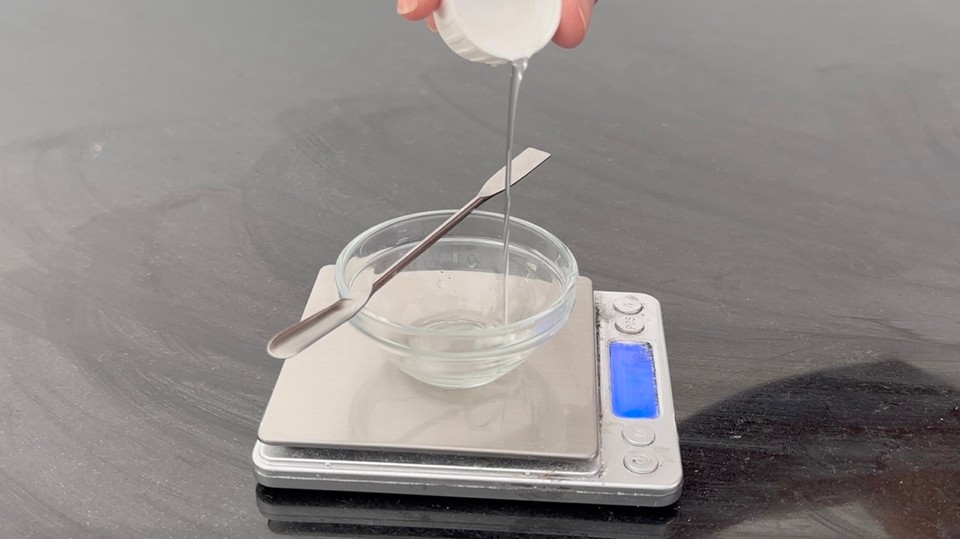
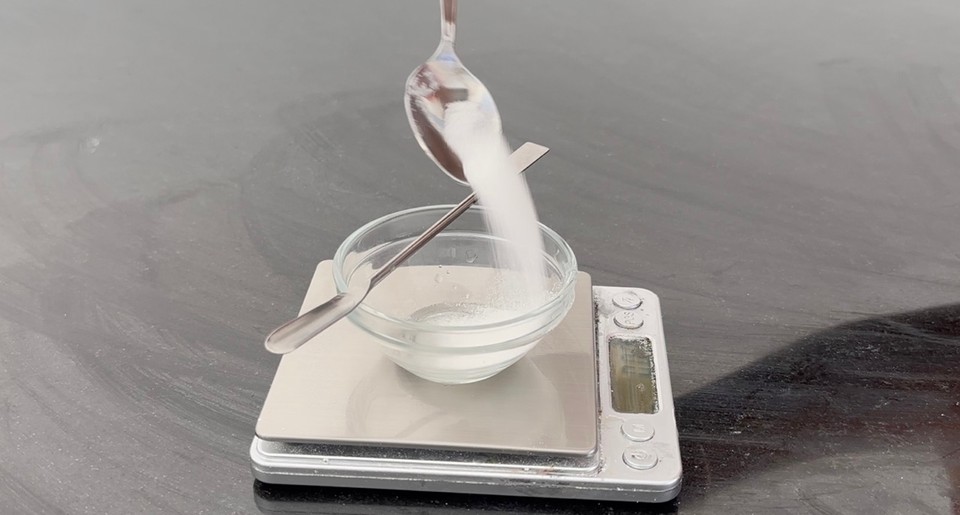
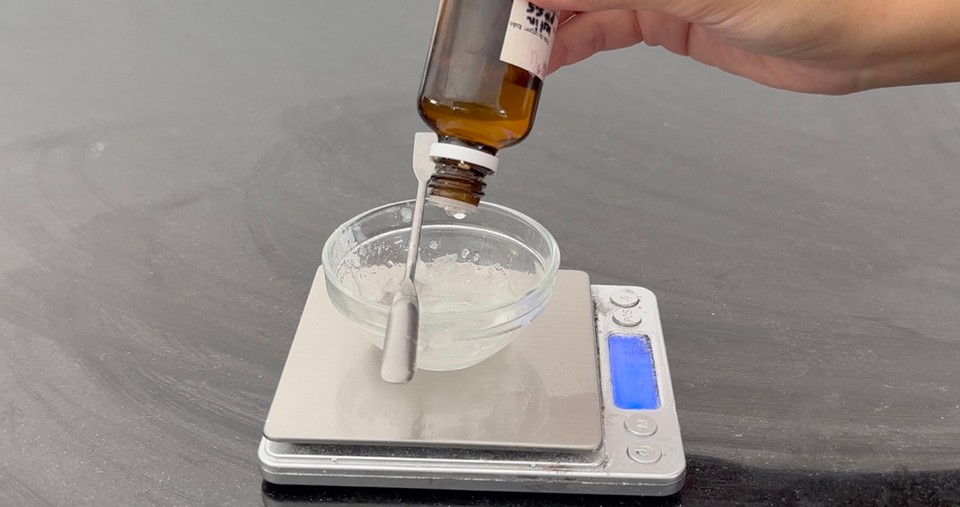

- If you want to add mica color to phases A and B, add it while it's heating and melting.


- Keep stirring phases A and B until a liquid-paste is formed.
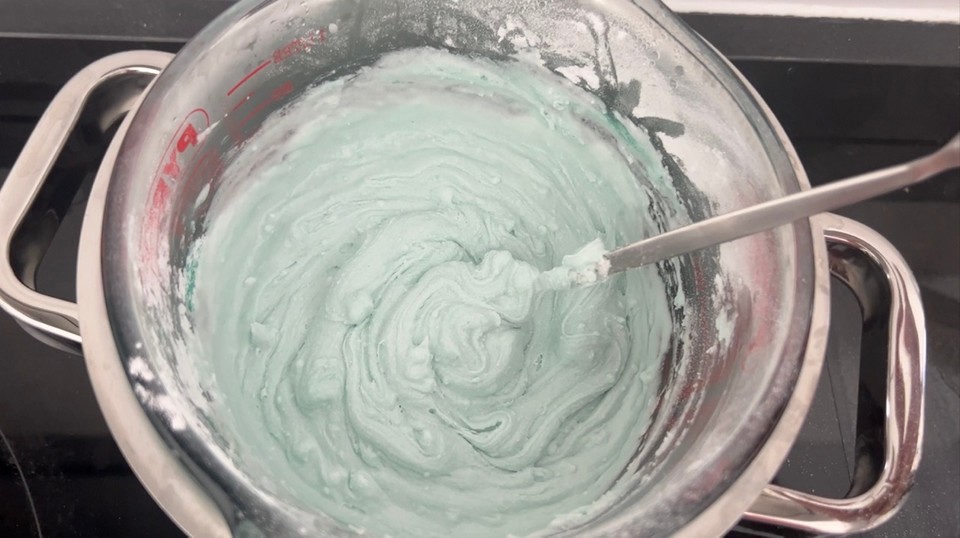
- Remove phases A and B from the heat. Keep stirring and add phase C,

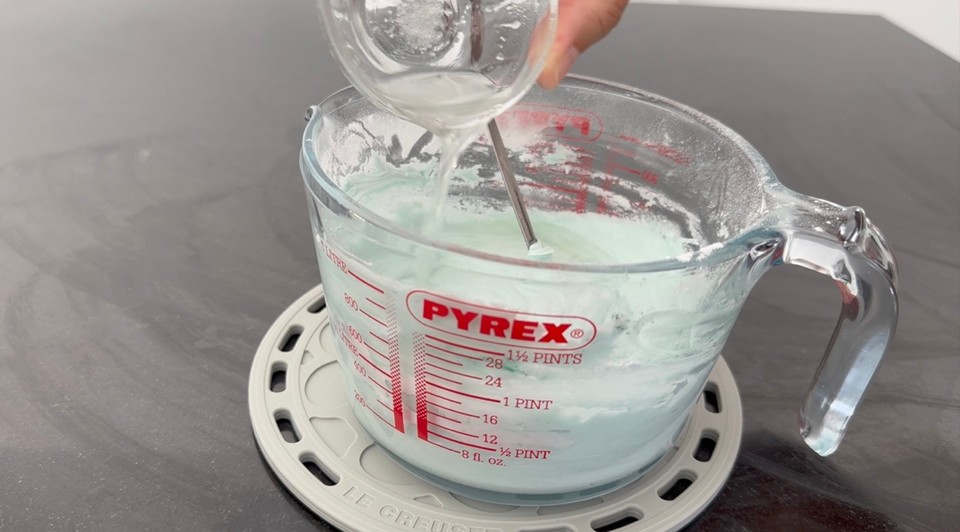
- Stir to combine phase C.

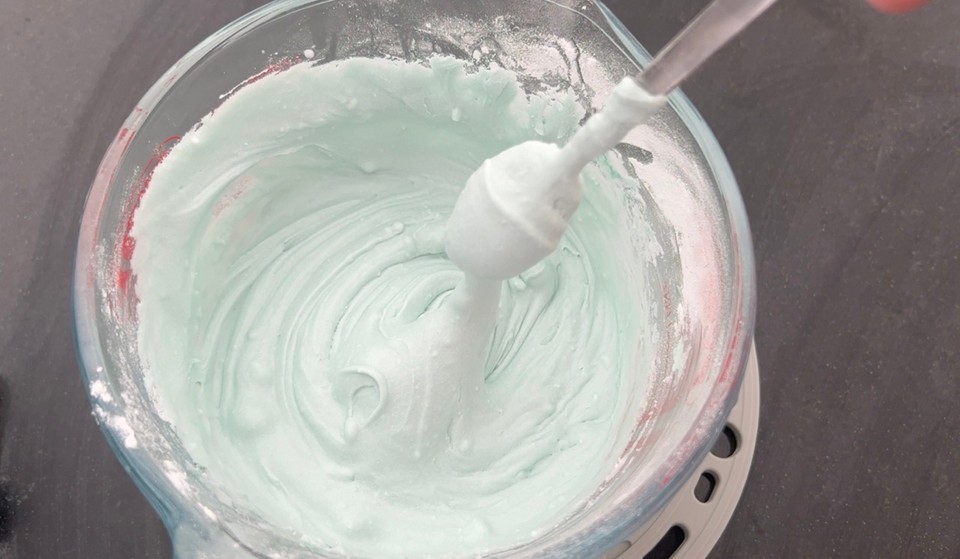
- Pour the mixture into silicone molds. Let the bars solidify and cool down. You can place the bars in the fridge for 2-3 hours to speed up the cooling process.
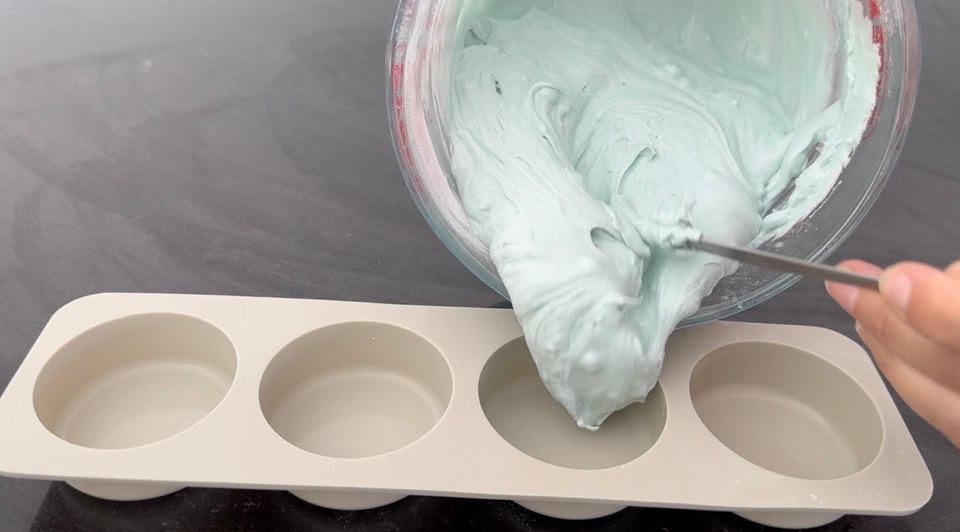
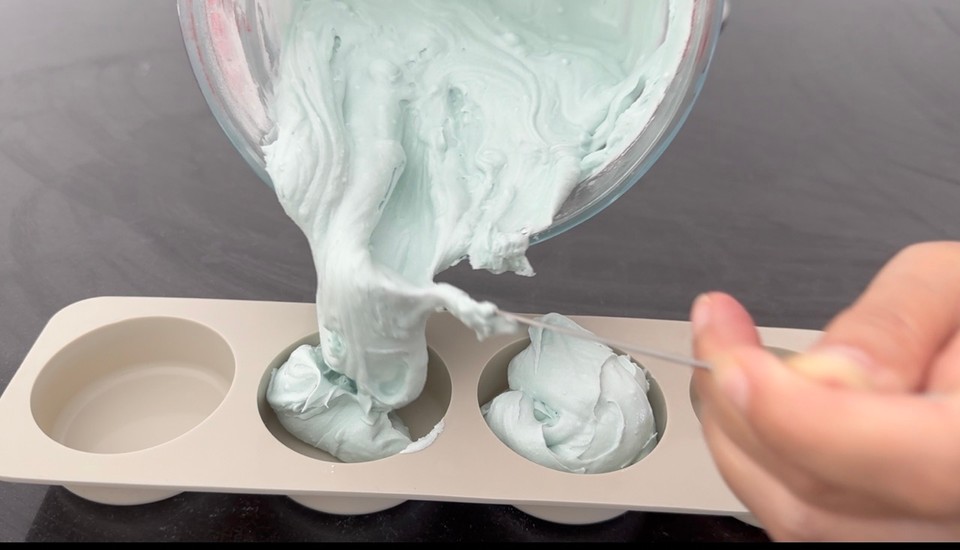
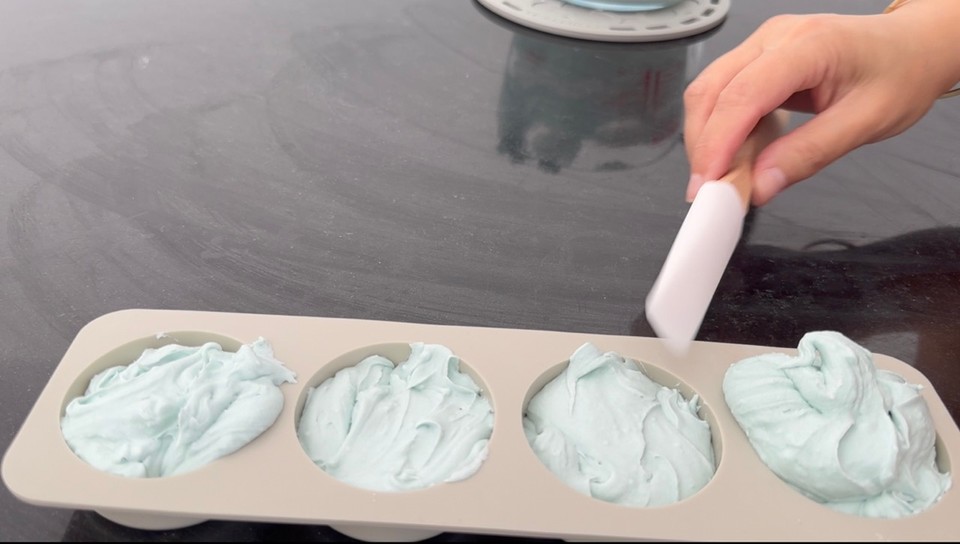

- Once the bars are cooled-down and solidified, you can use them. For long-lasting bars, remember to place them in a soap dish so the excess water will drain and let the bar dry in between uses.
